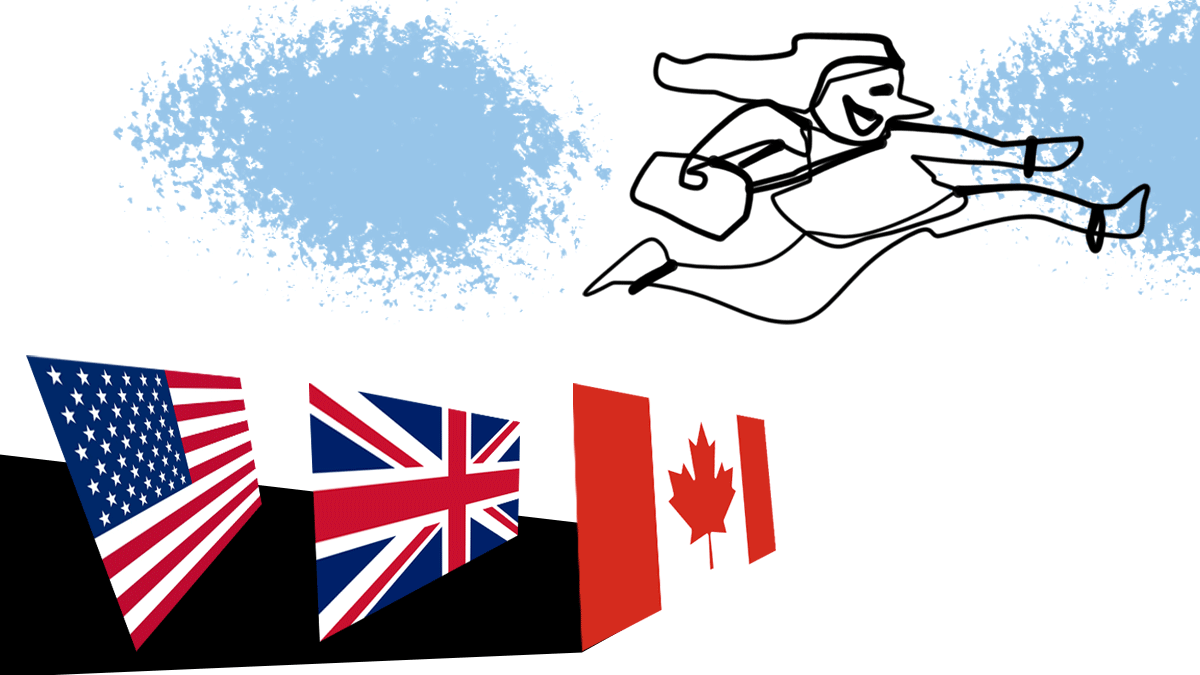In a dramatic turn of events this year, the patterns of Indian students venturing overseas for higher education are witnessing a dramatic shift.

Traditional destinations such as Canada, the United Kingdom and the United States are reporting sharp declines in student enrolments, while countries like Germany, Russia, New Zealand and France are fast emerging as promising alternatives.
Expert offer their insights and compelling data to unpack the complex factors fuelling this dramatic reshuffling of global study destinations.
A Comprehensive Decline in Traditional Destinations
Recent figures indicate that for the first time in five years, Indian student numbers in the US, UK, and Canada have simultaneously dropped.
According to an Indian Express report, the collective reduction was striking, with a 15% overall decline in Indian students studying abroad between 2023 and 2024. Some institutions saw up to a 40% fall, according to The Times of India.
This decline, says Karan Gupta, founder of Karan Gupta Consulting, "isn't a mass exodus away from the US, UK, or Australia -- but students and parents are diversifying their options and making more cost-conscious, future-oriented decisions."
Canada: Facing Diplomatic and Regulatory Pressures
Canada's steep 41% decline in Indian student enrolments -- plunging from 233,532 in 2023 to 137,608 in 2024 -- is rooted in three reasons: Stricter visa rules, diplomatic tensions, and economic constraints.
"Canada recently capped the number of international student permits to address housing shortages and alleged misuse of the student visa system," notes Gupta.
"This cap has created uncertainty, especially for private colleges and diploma programmes," he observes.
United Kingdom: Policy Changes and Economic Considerations
The UK has also seen a 27% drop, largely driven by recent immigration policy changes. The new rules restrict postgraduate students from bringing dependents and require foreign graduates to secure a qualifying job post-study.
According to Sonal Kapoor, Global Chief Business Officer at Prodigy Finance, "While the UK experienced a decline in applications last year, the numbers are now rising rapidly. Interest is also increasing in countries like France, Germany, New Zealand and Singapore, which have seen increases of up to 150%."
United States: A Mixed Picture Amid Changing Regulations
Even in the US, Indian student numbers declined by 13%, from 141,000 to 112,000. Though India recently overtook China as the largest source of international students, the underlying issues remain.
"Stricter visa regulations, rising deportations, and economic challenges like the depreciating rupee have created hurdles," Kapoor says.
"According to the ICEF monitor, Indian enrolments in the US dropped by 28% between March 2024 and March 2025 -- a sharp reversal from previous growth trends."
The Trump administration's rhetoric hasnt helped.
"The potential implementation of a 43-country travel ban, categorised into tiers based on risk levels, may deter students from affected nations," Kapoor adds.
Emerging Destinations: Diversification of Choices
Amid these shifts, countries such as Germany, Russia, New Zealand and France are experiencing robust growth in Indian student enrolments.
"Over the last few years, nations such as Germany, Ireland, France, the UAE, Italy, and Russia have become increasingly popular among Indian students," says Prashant A Bhonsle, CEO, Kuhoo Finance.
"They are becoming top choices because of their quality education, rich cultural exposure, and comfortable living environments."
Germany: The New Magnet for STEM Students
Germany stands out with a 34% to 42% increase in Indian student enrolments. Free or low-cost tuition, strong STEM offerings, and government-backed worker support policies make Germany a highly attractive option.
Kapoor emphasises: "Germany has supportive policies for workers. If someone loses their job, the government provides financial support until they find a new one. These advantages, combined with affordable education and solid career prospects, are hard to overlook."
Russia: Affordable Education Amid Geopolitical Shifts
With a 30% rise in Indian student numbers, Russia is proving to be a viable low-cost alternative, particularly in medicine and engineering. "Affordability plays a key role here," Bhonsle explains.
"Education in these newer destinations is about 42% cheaper on average than in conventional hubs like the UK and US."
New Zealand: A Rising Favourite
New Zealand saw a 38% increase in Indian student enrolments this year. Its high-quality education and flexible work and immigration policies are clear draws.
"EU countries and others like New Zealand are giving 12 to 24 month post-study work permits," says Gupta. "This gives students a real hope of finding employment after graduation."
France: Innovation and Outreach
France has seen a 25% rise in Indian student interest, aided by English-language programmes and active outreach efforts like Campus France.
Kapoor explains, "Given the ongoing global visa challenges, if the USA and UK fall short, France is likely to become increasingly popular among students. Its commitment to host up to 20,000 Indian students by 2025 shows serious intent."
Underlying Factors Shaping These Trends
Political stability, affordability, and employment prospects are emerging as key decision-making factors.
"The political climate in these destinations is usually seen to be more favourable and hospitable to international students than in some of the conventional nations," Bhonsle points out.
Cost is also crucial. "The cost of education in the EU and countries like Singapore is much lower than their western counterparts," notes Gupta. "That makes them more attractive and more affordable."
And while traditional countries still draw students, Kapoor says the "notable shift" is due to uncertainties surrounding visa policies and rising deportations, which are nudging Indian students to "explore safer, more stable alternatives."
What Lies Ahead?
Educational institutions in emerging destinations are now reforming admission processes and collaborating internationally to expand their reach. "Courses in STEM (science, technology, engineering, mathematics) fields, engineering, MBA, public policy, and law are becoming increasingly popular," says Kapoor.
"Countries offering affordable education, post-study work rights, and residency pathways are increasingly coming into the spotlight."
There's also clear evidence of this churn in the data: Bhonsle notes, "Trained destinations have experienced a 28.55% surge in the number of students, while newer destinations have had a more notable increase of 37.87%."
Conclusion
2024 may have well marked a turning point in the global education market. While the allure of the US, UK, and Canada dims under political and economic pressure, countries like Germany, France, Russia, and New Zealand are stepping up.
These nations offer a potent mix of affordability, stability, and future employability -- drawing the attention of a new generation of globally mobile Indian students.










